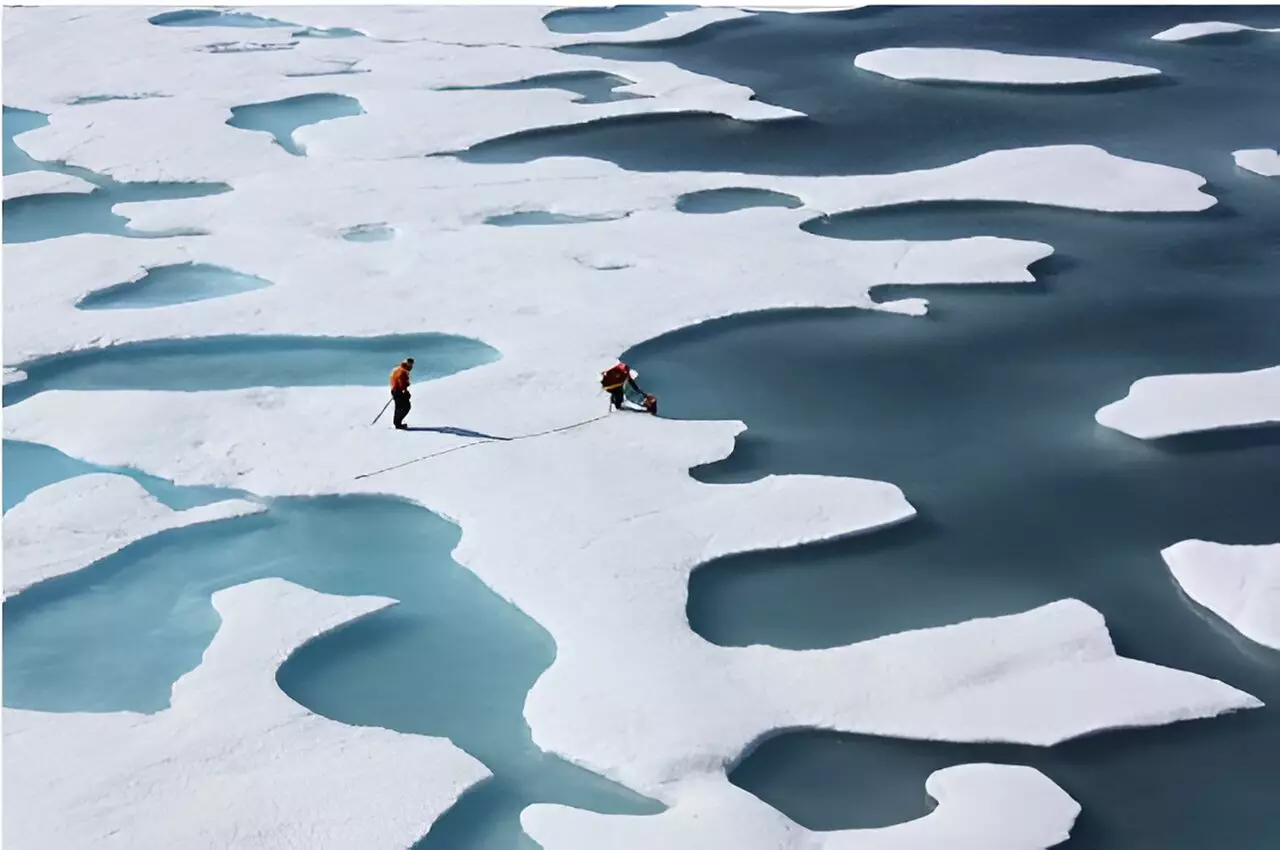In the heart of our planet’s climate crisis, alarming research has emerged highlighting a troubling trend: since 1980, the Arctic has shed nearly 25% of its cooling power, while the entire globe has witnessed a staggering 15% drop. This significant loss is not merely a statistic; it is a dire indicator of how climate change is reshaping our planet’s thermal dynamics. Conducted by a team at the University of Michigan, this research uses satellite data to assess changes in cloud cover and the solar radiation reflected by sea ice over four decades. The implications are profound, as they paint a grim picture of our environment’s precarious state.
The Role of Sea Ice in Climate Regulation
Sea ice plays an invaluable role in climate regulation, acting like Earth’s reflective shield. By reflecting solar radiation back into space, it helps maintain cooler temperatures. However, as this protective layer diminishes, its cooling ability is lost at a rate that outpaces the decline of the ice itself—an alarming finding that underscores the intricate relationship between sea ice and climate systems. The study highlights that the decrease in cooling efficacy is nearly double that of sea ice area reduction, suggesting that the feedback mechanisms at play are far more complex than previously understood.
Arctic vs. Antarctic: A Shifting Narrative
Traditionally, the Arctic has garnered the most attention concerning ice melt and its repercussions. Yet, the Antarctic, once viewed as a bastion of stable ice cover, is now coming under scrutiny. For a significant period, Antarctic sea ice appeared resilient—even showing trends of increased cooling power. However, this perception shattered when significant ice loss was recorded in 2016, following the unprecedented melting of an ice shelf larger than Texas. Since then, the cooling power of Antarctic sea ice has not only failed to rebound but has also contributed significantly to global warming feedback. The interplay between these two regions signals that both poles are not safe from climate change’s grip.
A Reflection on Ice: More Than Just a Thinning Sheet
The plight of the sea ice goes beyond mere disappearance. The remaining ice, subject to rising temperatures and increased precipitation, is becoming less reflective. This shift—characterized by thinner, wetter ice with bloom-like melt ponds—obfuscates its ability to reflect sunlight effectively. This phenomenon is especially pronounced in the Arctic during peak sunlight exposure but is beginning to raise concerns in the Antarctic as well. Researchers have found that these structural changes elevate the warming feedback by approximately 40%, signaling that our understanding of the total energy absorption due to these changes may be dangerously underestimated.
Urgency for Climate Strategies: Data-Driven Adaptation
As the planet grapples with these unsettling changes, the need for an agile response to climate adaptation has never been greater. The research team’s intention to disseminate their findings and updated estimates through accessible online platforms reflects a commitment to transparency and urgency. By equipping policymakers and the climate science community with vital data on the diminishing cooling power of sea ice, a more informed approach to climate adaptation can be developed. This adaptation should not only account for the straightforward loss of ice cover but also be mindful of the accompanying changes in radiative effect.
The Bigger Picture: Global Climate Dynamics
The challenges posed by diminishing sea ice extend beyond regional impacts; they reflect a broader narrative of global climate dynamics. Trends observed in the Arctic and the Antarctic serve as warning signals of potential feedback loops that could hasten climate change’s adverse effects. The data presented indicates that inaction or complacency towards these findings could lead to catastrophic miscalculations in predicting future climate scenarios. Thus, the urgency for comprehensive adaptation strategies, grounded in robust scientific data, cannot be overstated.
In a world teetering on the brink of climate catastrophe, understanding and addressing the decline in sea ice’s cooling power represents more than an academic exercise; it is essential for a sustainable future. The windows of opportunity to reverse adverse effects are narrowing, and it is pivotal that society acknowledges the complexities within the system before it is too late.

